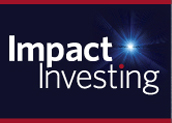• By asking your clients about their interests and overall portfolio objectives you can determine if impact investing is a good fit and if so, what kinds of products will align with their interests.
• Discuss your client’s comfort with liquidity or lack thereof, intended impact area and/or geographic focus, and their expected risk and return to help narrow the field of appropriate impact investments.
Rather than investing capital for simple financial returns, an investor engaged in pursuit of multiple returns will need to be directly involved in working with his or her asset managers to ensure that their portfolio reflects the desired impact strategies. And asset managers and advisors will increasingly provide leadership to their clients in constructing solutions that meet this appetite.
Impact investment approaches are gaining momentum and will be the baseline for the next generation of investors. This year that will see impact investing expand beyond high-net-worth investors and have a greater presence among mainstream retail investors.
Financial advisors who are receptive and informed when clients seek a broader definition of ROI will be positioned to take advantage of this growing market opportunity and will go a long way in ‘future proofing’ their client relationships.
Tim Freundlich is president of ImpactAssets, a nonprofit financial services firm that increases the flow of capital into investments that deliver financial, social and environmental returns. Its impact investment strategies, donor-advised fund and knowledge resources provide a dynamic platform for wealth managers and the clients they serve to advance social or environmental change through investment. ImpactAssets seeks to shed light on—and drive capital to—the field’s most promising organizations and initiatives, helping to build the field of impact investing.

